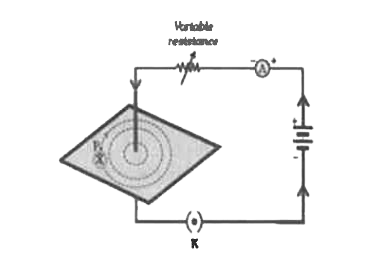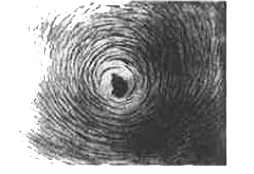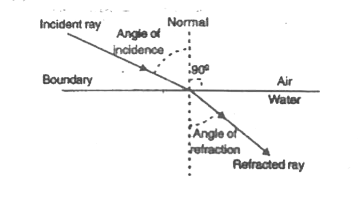InterviewSolution
This section includes InterviewSolutions, each offering curated multiple-choice questions to sharpen your knowledge and support exam preparation. Choose a topic below to get started.
| 5251. |
In the slides showing binary fission in Ameoba and budding in yeast, what is it observed? |
| Answer» Solution :It is OBSERVED that the DAUGHTER cells of Amoeba and the bud of yeast are SMALLER in SIZE than their respective PARENTAL cells. | |
| 5252. |
The unit of torque is |
|
Answer» Nm |
|
| 5253. |
An object may have a)varying speed without having varying velocity b)varying velocity without having varying speed c) nonzero acceleration without having varying velocity d)nonzero acceleration without having varying speed. |
|
Answer» varying SPEED WITHOUT having varying VELOCITY |
|
| 5254. |
The magnetic field produced due to a current through a circular loop depends directly on ............ . |
|
Answer» radius of the LOOP |
|
| 5255. |
You cannot enjoy watching a movie from a very short distance from the screen in a cinema hall. Give reason |
|
Answer» Solution :i. The nearer SOMEONE is sitting to the screen of the cinema hall, the more is the intensity of light falling on the EYE. ii. Thus, the pupil has to CONTRACT a lot, which causes a strain in the eye. Hence, you cannot enjoy watching a movie from a very SHORT distance from the screen in a cinema hall. |
|
| 5256. |
An electric heater consumes 4.4 kW power when connected with a 220V line voltage. Calculate the energy consumed in 2hours. |
| Answer» SOLUTION :`3.168 XX 10^7 J` | |
| 5257. |
At typical solar cell can generate electricity of about |
|
Answer» 14 WATT |
|
| 5258. |
Whatis the roleof eachof thethreepins in a power plug ? |
| Answer» Solution :The thickpin at the TOP of a power PLUG is for EARTHING . The live pin is one the LEFT and the neutral pin is one theright of the power plug . | |
| 5259. |
Rapid back and forth motion of a particle about its mean position is called _____. |
|
Answer» |
|
| 5260. |
When a graph between two physical quantities is a straight line, the two quantities are: |
|
Answer» both CONSTANT |
|
| 5261. |
Describe an activity to obtain magnetic field lines around current-carrying straight conductor. |
|
Answer» Solution :Activity to plotthe magneticfield lines produced by a currentcarrying wire (straight conductor) : Figure : Circuitto study magnetic field lines around a straight current carrying wire . 1] Connect a plug KEY, a 12 V battery, a variable resistance (or a rheostat) , an ammeter (0-5 A) in series as shownin the figure . 2] Insert a thick copper wire through the centre of a rectangularcardboard. Ensure thatthe carbdoardremains in fixed POSITION and does not slide up or down. 3] Connect thetwo endsof the copper wire between points X and Y in the circuit . 4] Sprinkle some iron filingson the carbdoarduniformlyusing salt sprinkler. 5] Keep the rheostatin a fixed position and note down the value of current using ammeter. 6]Close the plug key and keep the copperwire vertical. 7] Gently tap the cardboarda few times and observe the pattern formed by the iron filings. 8] Move a compass needle on one of the lines in the patternand note down the direction of north poleof the needle. 9] Reverse the connection of thebattery so thatthe current flows in the oppositedirection and observe the change in the deflection of compass needle. 10] Keeping the compass needle at a fixed position, change the current using rheostatand observe the changesin deflection of the needle. Figure : Pattern formed by iron filings show the magneticfield lines arounda straight current carryingwire. Inference : The iron filings arrange themselves in the form of concentric circles aroundthe copper wire which represent themagnetic lines of FORCE. The direction of the north pole of the compass needle gives the direction ofthemagneticfield. We observe that this direction is reversed if the direction of current in the wire is reversed.   
|
|
| 5262. |
Define - Linear momentum. |
|
Answer» Solution :The product of mass and velocity of a MOVING body gives the magnitude of linear momentum. It ACTS in the direction of the velocity of the object. Linear momentum is a vector quantity. `"Linear Momentum" = "mass" xx "velocity"`. Unit of momentum in SI system is `"Kg MS"^(-1)` and in C.G.S system its unit is `"g cm s"^(-2)`. |
|
| 5263. |
The energy of water flowing through rivers and stored in dam is used as a form of : |
| Answer» Solution :Potential energy | |
| 5264. |
cal//g, cal//g.^(@)C,kcal//kg.^(@)C, erg //g.^(@)C. |
| Answer» Solution : Cal/g. (It is a unit of specific LATENT HEAT. Others are units of specific heat CAPACITY ). | |
| 5265. |
Define nuclear fission. |
| Answer» SOLUTION : A heavy, radioactive NUCLEUS, on BOMBARDMENT with neutrons, splits into two or more nuclei with the release of a large AMOUNT of ENERGY | |
| 5266. |
What is the conlusion in the Ohm's law experiment ? |
| Answer» SOLUTION :`V//I="CONSTANT (or)"VpropI.` | |
| 5268. |
The displacement x of a particle varies with time as x = 4t^(2) – 15t + 25. Find the position, velocity and acceleration of the particle at t = 0. |
|
Answer» SOLUTION :position, x = 25 m VELOCITY `=(dx)/(dt)=8t-15`, `t=0, v=0-15=-15 m//s` acceleration, `a=(DV)/(dt)=8 ms^(-2)` . |
|
| 5269. |
Draw a ray diagram showingthe path of rays of light when it enters with oblique incidence From air into water |
Answer» SOLUTION :(a) From AIR into WATER 
|
|
| 5270. |
What is the use of Retina. |
| Answer» SOLUTION :RETINA is the most SENSITIVE part of human eye on which REAL and inverted image of object is FORMED. | |
| 5271. |
"The sum of indiviual resistance is equal to their equivalent resistance". How is resistors are connected in the cicuit ? |
| Answer» SOLUTION :In SERIES. | |
| 5272. |
Astronauts are not floatingbut falling freely due to huge _______. |
| Answer» SOLUTION :ORBITAL VELOCITY | |
| 5273. |
When a body falls freely to the ground, its velocity reduces to zero and the sum of the total kinetic energy and potential energy also becomes zero. Does it violate the law of conservation of energy? |
| Answer» SOLUTION :Law of conservation of ENERGY is not violated. Energy can nelther be CREATED nor be destroyed. Here potentlal energy and kinetic energy are converted into HEAT [or LIGHT| energy . | |
| 5274. |
Which of the two-linear velocity or the linear acceleration gives the direction of motion of a body? |
| Answer» SOLUTION :LINEAR VELOCITY | |
| 5275. |
Mention the main use of slurry left behind in the biogas of plant. State the characteristics of the slurry on which this use is based. |
|
Answer» Solution :(i) Slurry is USED as a MANURE. (II) Slurry is RICH in nitrogen and phosphorus. |
|
| 5276. |
On what factor does the colour of the light depends ? |
| Answer» SOLUTION :On WAVELENGTH of LIGHT. | |
| 5277. |
a. Explain the following terms related to spherical lenses: (i) Optical centre (ii)Centre of curvature (iii) Aperture (iv) Principal focus b. A converginglens so that it forms an image at 48 cm on the other side of the lens. |
|
Answer» Solution :a. (i) Optical centre: The centre point of a lens is known as its optical centre. It always lies inside the lens. A light beam passing through the optical centre emerger without any deviation. (ii) Centre of curvature: It is DEFINED as the centre of the sphere of which the lens is originally a part of. Because the spherical lens consists of two spherical surfaces, the lens has two CENTRES of curvature. (iii)Aperture. This is the length of BREADTH of the lens through which refraction takes place. (IV)Principal focus: A light ray parallel to the principal axis of thelens meets at a point on the principal axis. This point is called the principal focus. Focal length of converging lens f=12 cm Image distance v=48 cm Using the lens formula we get: `1/f=1/v-1/u` `1/u=1/v-1/f=1/48=1/12` `=(1-4)/48=(-3)/48` `:.u=-48/3=-16cm` So the distance of the object from the lens is 16 cm. |
|
| 5279. |
Draw a ray diagram of formation of image by a convex lens. |
Answer» SOLUTION :
|
|
| 5280. |
Name an instrument that measures potential difference between two points in a circuit. Difine the unit of potential difference in terms of SI unit of charge and work . Draw the circuit symbols for a (i) veribale resisitor , (ii) a plug key which is closed one . Two electric circutirs I and II are shown below. (i) Which of the two circuits has more resistance? (ii) Through which circuit more current passes? (iii) In which circuit, the potential difference across each resistor is equal? (iv) If R_(1) gt R_(2) gtR_(3), in which circuit more heat will be produced in R_(1) ascompared to other two resistors? . |
|
Answer» Solution :Voltmeter measures potential difference between two points in a circuit. `V = (W)/(Q)` V = Potential difference,W = WORK doneQ = Quantity of change `V= (1J)/(1C) = 1 ` volt. The SI unit of potential different is volt. The potential difference between two points is said to be 1volt if 1 joule of work is DONE in moving 1 coulomb of electric charge from one point to the other. Circuit symbols of - (a) VARIBALE resistor  (i) Circuit (I) has more resistance as the combined resistance of any number of resistance connected in series is equal to the sun of the individual resistance. (ii) Circuit (II) (III) In circuit (II) the potential difference across each resistor is equal. (iv) If `R_(1) gt R_(2) gt R_(3)`in circuit (I) more heat will be produced in `R_(1)` as compared to other two resistors. |
|
| 5281. |
Draw the ray diagram for the formation of image by a concave lens when the object is placed in between infinity and optical centre of the lens. State the nature of the image formed. |
Answer» SOLUTION : NATURE of the IMAGE: VIRTUAL and ERECT. |
|
| 5282. |
The time dependance of a physical quantity 'P' is given by P=P_(0)exp(-at^(2)), where a is a constant and 't' is time . The constant a is |
|
Answer» <P>dimensionless |
|
| 5283. |
State the laws of rolling friction . |
|
Answer» Solution :When a body is ROLLING over the other , then friction between the bodies is known as rolling friction . Rolling friction COEFFICIENT , `mur=("Rolling friction")/("Normal reaction")=(Fr)/(N.R)` Laws of rolling friction : (1)Rolling friction will develop a point contact between the surface and the rolling sphere. For objects like wheels line of contact will develop. (2)Rolling friction`(f_(r))` has least value for given normal reaction when compared with static friction `(f_(s))` or kinetic friction `(f_(k))`. (3) Rolling friction is directly proportional to normal reaction , `f_(r)propN.` (4) In rolling friction the surfaces in contact will get momentarily deformed a little . (5) Rolling friction depends on area of contact . Due to this reason friction increases when air presure is less in tyres (Flattened typers). (6) Rolling friction is inversely proportional to radius of rolling body `murprop(1)/(r)` |
|
| 5284. |
What do we mean by natural and artificial pollution ? |
|
Answer» SOLUTION :a. The pollution caused due to natural EVENTS such as volcanic eruptions,cyclones , floods, storms, etc., is called as natural pollution. b. Pollution caused by manmade ACTIVITIES like DEFORESTATION, URBANIZATION , industrialization, etc., is called as artificial pollution. |
|
| 5286. |
3 mL of ethanol is taken in a test tube and warmed gently in a water bath. A 5% solution of alkaline potassium permanganate is added first drop by drop to this solution, then in excess.(i) How is 5% solution of KMnO4 prepared ?(ii) State the role of alkaline potassium permanganate in this reaction. What happens on adding it in excess ?(iii) Write chemical equation of this reaction. |
|
Answer» Solution :(i) 5% solution of `KMnO_4` is OBTAINED by dissolving 5 g of solid `KMnO_4` in 100 mL of water. (ii) Alkaline potassium PERMANGANATE acts as an oxidising agent. Pink colour of `KMnO_4` is discharged and ethanoic acid is formed. (iii) `CH_3CH_2OH overset("Alkaline "KMnO_4)underset(HEAT)rarrunderset("Ethanoic acid")(CH_3COOH)` |
|
| 5287. |
The electric flux through the surface |
|
Answer» in fig. (IV) is the largest |
|
| 5289. |
Describe an activity to listen the reflection sound. |
|
Answer» Solution :1) Take two long indentical tubes and place them on a table near a wall. 2) Ask your friend to speak softly into one tube while your use the other tube to LISTEN. 3) Adjust he tube until you HEAR the best sound. 4) You will find that you hear your friend's voice best when the tube makes EQUAL angles with a normal to the wall. 5) This shows that reflection of sound follows the laws of reflection of light. 6) Lift your tube slightly above the table. 7) You will not be ABLE to listen the voice clearly, because the plane carrying the incident wave and reflected wave are changed. 8) Repeat the experiment by placing flat objects of different materials against the wall and observe the changes in the sound. Observations : 1) Reflection ofsound follows the laws of reflection of light. 2) When the plane carrying incident wave and reflecting wave changes, the reflected sound cannot be heard clearly. 3) Hard or rough surface reflect the sound better than soft surface.  . .
|
|
| 5290. |
If a traveler in a spacecraft orbiting the Earth releases an object from hishand, it remaisn stationary and appears to be in a state of weightlessness. Does this mean there is no force of gravity acting on the object? |
|
Answer» Solution :i. No, there is a force of GRAVITY acting on the body. Though the spacecraft is at a height from the SURFACE of the earth, the value of g there is not zero, but only 11% less than its value on the surface of the earth. ii. Thus, the weightlessness is not caused by the height of the satellite but by beign in a state of free fall. Though teh sapcecraft is not falling on the earth because of its velocity along the orbit, the only force acting on it is the gravitational force of the eath and therefore it is in a state of free fall. (iii) As the velocity of free fall does not depend on the properties of an object, itis the same for the spacecraft, the travellers and the object in the CRAFT. iv. Thus, if a traveller releases an object from his hand, it will remain STATIONARY with respect to him and will appear to be WEIGHTLESS. |
|
| 5292. |
What is ecology? |
| Answer» Solution :ECOLOGY is the science which deals with the study of INTERACTIONS between BIOTIC and ABIOTIC factors of the environment. | |
| 5293. |
Namesome sourceof direct current. |
| Answer» Solution :ELECTROCHEMICAL DRY cells, batteries , DC geneators , SOLAR cells , ETC. are source of DIRECT current (DC). | |
| 5294. |
Which of the following lenses would you prefer to use while reading small letters found in a dictionary? |
|
Answer» A CONVEX lens of FOCAL length 50 cm |
|
| 5295. |
How much energy is given to each coulomb of charge passing through a 6V battery? |
|
Answer» Solution :Given that POTENTIAL difference V=6V and Charge Q=1C `THEREFORE` Energy given =TOTAL work DONE `W=Q.V=1C times 6V=6J`. |
|
| 5296. |
A 5 cm tall object is placed fraction to the principle axis of a convex lens of focal length 20 cm . The distance of the object from the lens is 30 cm. Find the (i) position, (ii) Nature, (iii) Size of the image formed. Given Object size , h_(0) =5 cm Object size , h_1 = 5cm Object distance , u=-30 cm Focal length of convex lens , f= 20 cm To find : size of image h_1 = ? Nature of image = ? Position of image = ? |
|
Answer» Solution :`1/f = 1/v -1/u ` `1/v = 1/u + 1/f` `=(-1)/(30) +(1)/(20) =(-2 + 3)/(60)` (or) `1/v =1/(60) implies v =60 cm` Magnification =`("height of the image SIZE")/("height of the object")` `=(h_(2))/(h_(1))` `m=(h_(i))/(h_(o)) implies v/u =(60)/(-30)=-2` `therefore h_(2) = h_(1) xx (-2) = 5XX(-2) = 5xx (-2) =-10 cm`. (i) The image is real, inverted and magnified. (II) Size of the image , `h_2 =-10 cm` |
|
| 5298. |
In the above question, change in internal energy of gas is |
|
Answer» `-2660.23J` `DeltaU=(2xx8.31xx(189-300))/(5/3-1)=-2767.23J` |
|
| 5299. |
A magnetic field |
|
Answer» always exerts a force on a charged PAR ticle |
|
| 5300. |
A student dips pH papers in solutions A and B and observes that the pH paper turns blue and orange respectively in them. What does he infer ? |
| Answer» Solution :He infers that A is SODIUM carbonate solution and B is acetic acid . The pH PAPER turns blue when dipped in solution A, it MEANS A is a strong BASE having pH `9` and the pH paper turns orange when dipped in solution B, it means B is a strong acid having pH `4`. | |